Welcome to This Date in Aviation History, getting of you caught up on milestones, important historical events and people in aviation from September 5 through September 8.
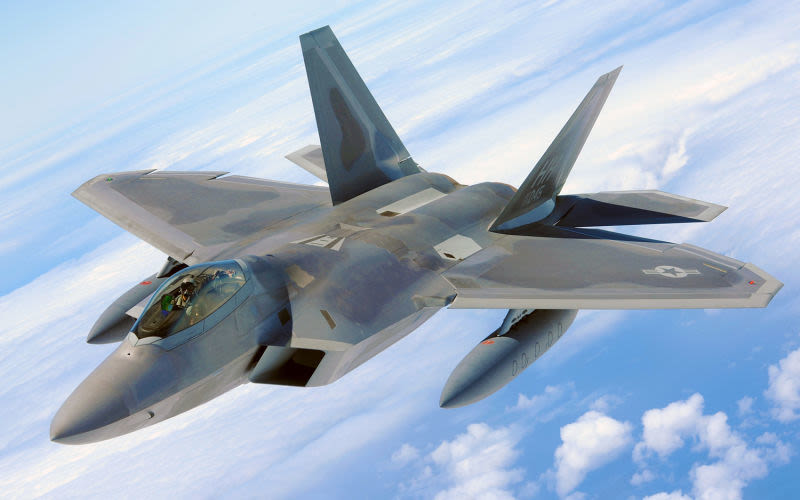
September 7, 1997 – The first flight of the Lockheed Martin F-22 Raptor. With the arrival of the warplane in WWI, the concept of seizing the high ground in battle evolved from stationing your army on a hill above the enemyto seizing control of the ultimate high ground, the airspace over the battlefield. As fighter aircraft evolved, the concept of the dedicated air superiority fighter evolved along with them, one that would clear the air of enemy aircraft and hold it while specialized ground attack aircraft could operate at lower levels. As aircraft further evolved and developed new capabilities, it became possible to combine air supremacy and ground attack in a single aircraft.
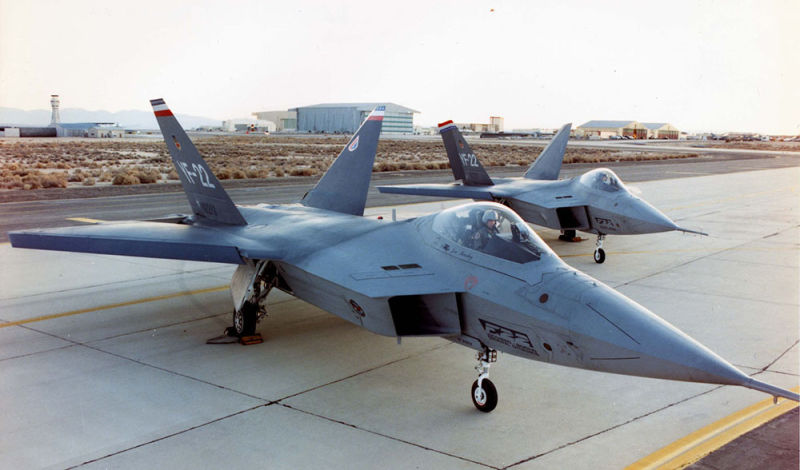
In the 1980s, the US Air Force began the process of finding a new air superiority fighter to replace the McDonnell Douglas F-15 Eagle, one that would also be as flexible in both the fighter and the ground attack role as the General Dynamics F-16 Fighting Falcon. As part of that effort, and to counter ever more advanced aircraft being produced by America’s adversaries, the Air Force began development of what it called the Advanced Tactical Fighter in 1981. The new fighter would also make use of the latest advances in stealth technology. By 1984, the Air Force had settled on the requirements for the new aircraft which called for a fighter with a 50,000 poound maximum takeoff weight, a radius of 800 miles, and the ability for supercruise, meaning the fighter would be able to maintain supersonic speeds without the use of gas-guzzling afterburners. Two aircraft were selected for a competition for what would result a very lucrative contract: the Lockheed Martin YF-22, and the Northrop YF-23. Though the YF-23 proved to be stealthier and faster, the YF-22's thrust vectoring engines made it more maneuverable. Both aircraft were seen as very capable platforms, but the Air Force selected the YF-22, and it entered production in 1996 as the F-22 Raptor.
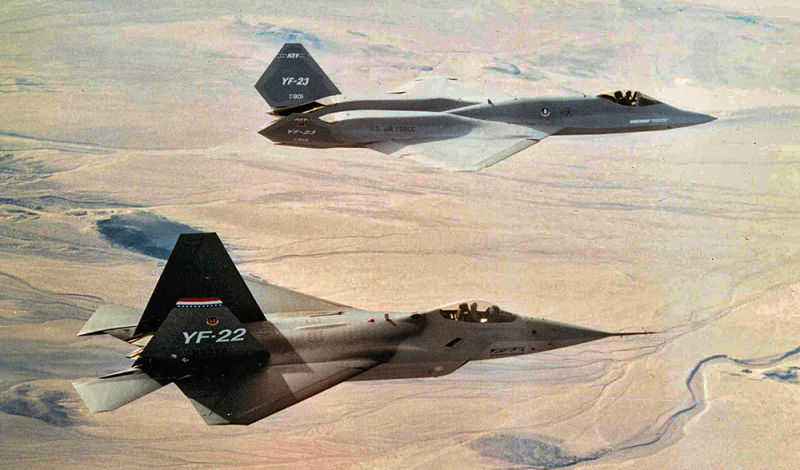
The Air Force describes the fifth generation Raptor as a “combination of stealth, supercruise, maneuverability, and integrated avionics, coupled with improved supportability, represent[ing] an exponential leap in warfighting capabilities. The Raptor performs both air-to-air and air-to-ground missions allowing full realization of operational concepts vital to the 21st century Air Force....The F-22 cannot be matched by any known or projected fighter aircraft.” The Raptor’s stealthy design allows it to target and destroy opponents before being detected by the enemy, and its advanced avionics allow it not only to protect itself but to protect other assets as well, a critical capability for the networked battlefield of the future. The F-22 is powered by a pair of Pratt & Whitney F119 afterburning turbofans and has an estimated top speed of Mach 2.5. It is armed with one 20mm M61A2 Vulcan rotary cannon, and its internal weapons bay can carry both air-to-air missiles for air defense and air-to-ground missiles for ground attack. Four underwing pylons can be fitted with either drop tanks or additional ordnance. During the development of the aircraft, designers toyed with different names and designations for the F-22. At one time, in a nod to its capability for ground attack, it was designated F/A-22, but upon introduction the designation was changed back to F-22. Lockheed had originally chosen “Lightning II” after the iconic WWII fighter, and it was also briefly called the “SuperStar” and “Rapier.” But, perhaps in a reference to the Eagle it was meant to replace, the Air Force eventually settled on another bird of prey, the Raptor.

Due in part to its high cost, and the continued development of what some consider to be the more advanced Lockheed Martin F-35 Lightning II, the Air Force made the controversial decision to halt production of the F-22 in 2011. The Air Force had initially requested 648 Raptors, and that number was then cut to 440. Ultimately, just under 200 F-22s were built. However, the protracted and troublesome development of the F-35 has led to a high demand for the Raptor to respond to a burgeoning number of missions around the world, and discussions began about restarting the F-22 production line. However, such a restart remains highly unlikely. Though the tooling and assembly structures were preserved when the production line was shut down 2012, the cost of restarting the supply train and production line is estimated to be upwards of $50 billion to procure 194 more Raptors. At least for now, the Air Force will have to make do with the Raptors it has, while the F-35 begins to fill active duty squadrons.

September 7, 1965 – The first flight of the Bell AH-1 Cobra. By the outbreak of the Vietnam War, the US Army had become very much a helicopter-borne force, using the theories of vertical envelopment to carry troops into battle. The Bell UH-1 Iroquois, better known as the Huey, became the modern Army mule. This all-purpose utility helicopter, which first flew in 1956, came to symbolize the war in Vietnam, as it appeared on the nightly news airlifting troops and supplies to the battlefield and evacuating casualties to medical aid stations. While the Huey proved to be invaluable in these roles, it was also relatively slow, lightly armed, and susceptible to ground fire. The Army responded by turning some of the Hueys into makeshift gunships, but they soon realized the need for a dedicated attack helicopter to protect the transport helicopters and support ground troops in combat, particularly when they were under fire and vulnerable in contested landing zones.
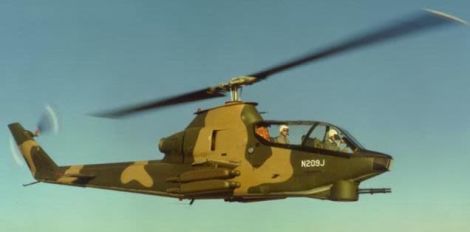
Bell Helicopter had been working on the first dedicated helicopter gunship since the early 1950s, and they presented the Army with the Bell Model 207 Sioux Scout in 1963, which was essentially the first modern attack helicopter. The Army was impressed, but the Sioux Scout had shortcomings that concerned Army brass. A year later, the Army launched the Advanced Aerial Fire Support System (AAFSS) competition and settled on the Lockheed AH-56 Cheyenne which, after 10 years of costly development, had turned out to be too complex and was ultimately canceled. However, Bell, which had not been asked to take part in the competition, had been continuously developing their own light attack helicopter, using the engine, transmission and rotor system that had been proven in the Huey.
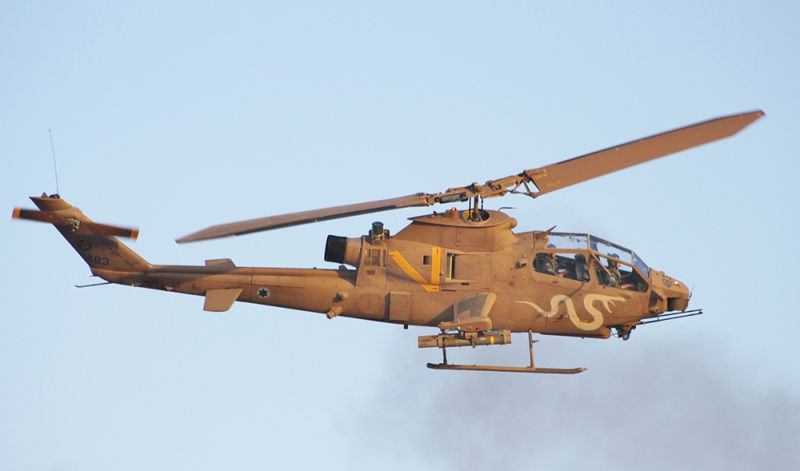
The new helicopter, designated the Bell 209, was designed to carry 7.62mm miniguns or a grenade launcher in a chin-mounted turret, as well as rockets or missiles on stub wings affixed to the fuselage. The crew of two sat in a tandem configuration with gunner in the front and pilot in the rear that made for a very slim profile when seen head-on, making it more difficult to hit from the ground as as the helicopter bore down on its target. In 1967, the Army adopted the 209, now with a traditional fixed landing skid rather than the original retractable gear, as the AH-1 Cobra. Cobras were in the air over Vietnam by the summer of 1967, and saw action during the Tet Offensive of 1968 and throughout the rest of the war. In addition to their combat support roles, Cobras teamed with Hughes OH-6 Cayuse light observation helicopters to form hunter-killer teams that provided support during the rescue of downed pilots. Following Vietnam, the Cobra remained in service and took part in the invasions of Grenada and Panama, and were flown during both Operation Desert Shield and Desert Storm. The Army finally phased out the Cobra in the 1990s in favor of the Bell AH-64 Apache. The Cobra was also exported to 11 nations, and was manufactured in Japan by Fuji Heavy Industries.
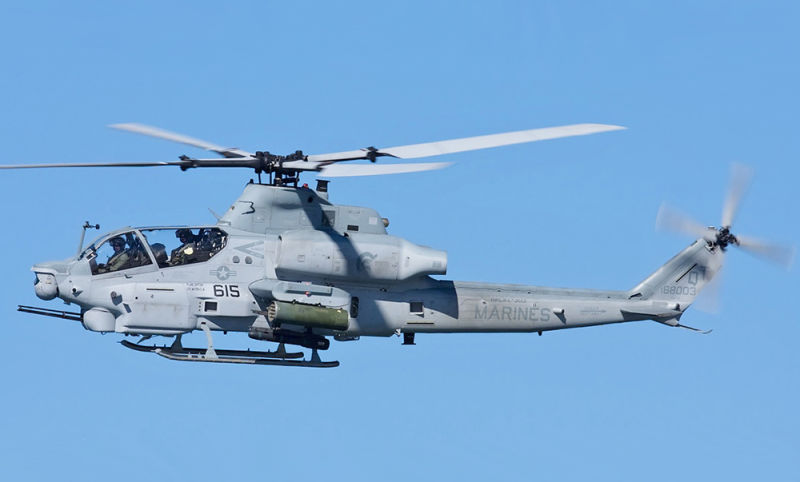
It is difficult to overstate the effectiveness of the Cobra as a dedicated attack helicopter, and it has proven so useful that its basic design was modified into more powerful versions with the addition of a second engine. The resulting Bell AH-1J SeaCobra and Bell AH-1W SuperCobra, as well as the latest version, the Bell AH-1Z Viper, form the backbone of the US Marine Corps attack helicopter fleet and will continue to do so for quite some time. Older AH-1 Cobras also remain in service with export countries, and two Firewatch Cobras serve the US Forest Service by using infrared sensors and cameras to support firefighters on the ground.
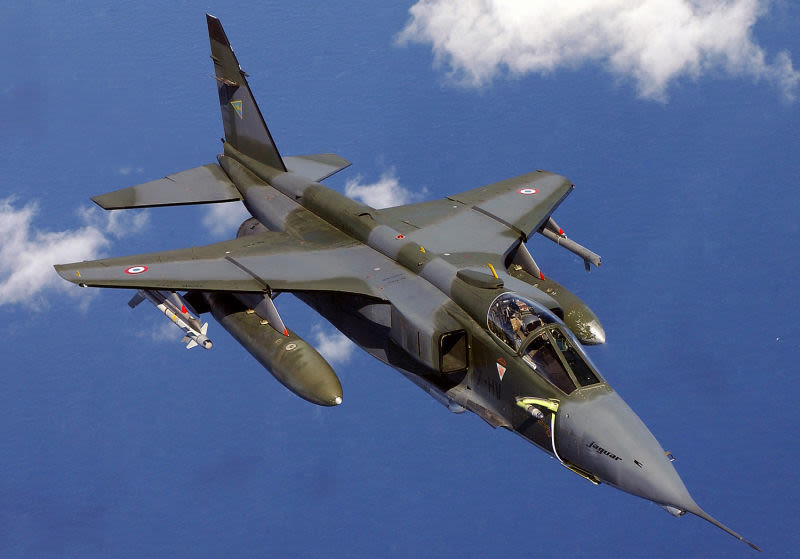
September 8, 1968 – The first flight of the SEPECAT Jaguar. In the early 1960s, the British Royal Air Force began looking for a new two-seat supersonic trainer to replace the Folland Gnat T.1 and the Hawker Hunter T.7, which had been in service since the mid-1950s. At the same time, the French Armée de l’Air was looking for a new supersonic trainer that could also double as a light attack aircraft to replace the Fouga CM.170 Magister, the Lockheed T-33, and the Dassault Mystère IV, all of similar vintage to their British counterparts. But developing a new military aircraft, or any aircraft for that matter, is an extremely expensive undertaking. However, one way to reduce costs, and take advantage of the expertise of others, is to form a consortium of manufacturers from friendly nations and divide the work between them.
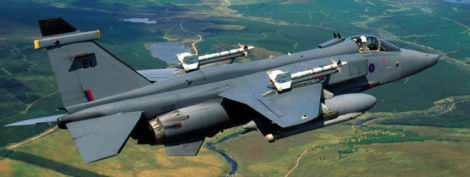
With both France and England working toward a common goal, they decided to join forces on the project and formed a partnership between French Breguet and the British Aircraft Corporation that was known as Société Européenne de Production de l’Avion d’École de Combat et d’Appui Tactique (SEPECAT). This translates as “European company for the production of a combat trainer and tactical support aircraft” and makes the acronym very handy. The two companies agreed that unique assemblies would be produced by both countries, and that final assembly would take place in both England and France. A second consortium of Rolls-Royce in England and Turbomeca in France worked together to produce the Rolls-Royce Turbomeca Adour afterburning turbofan engines that gave the Jaguar a top speed of Mach 1.6. Externally, the design featured a high wing that allowed for easy access to weapons stores and external fuel tanks, a tricycle landing gear, and unique overwing pylons for short-range air-to-air missiles, an arrangement that freed up space under the wings for fuel, weapons, or other stores.
The French were the first to receive the new fighter, in both the E (École, or trainer) and A (Appui, or Attack/Support) versions in 1973. While initially envisioned as a nuclear-capable attack aircraft, the Jaguar never performed this role for the Armée de l’Air, and instead was used as a support aircraft to clear the way for the nuclear armed Mirage fighters. The Jaguar served the French in numerous regional conflicts in their former colonies, as well as the Gulf War in 1991. The RAF placed the Jaguar into service in 1974 in both fighter/bomber and trainer versions, where it eventually saw action in the Gulf War of 1991 alongside French Jaguars. British Jaguars returned to the Gulf in 1994 as a target designation aircraft for other Coalition aircraft. Unlike the French, the British used the Jaguar in the tactical nuclear strike role where it carried the WE.177 tactical nuclear bomb. SEPECAT procuded a total of 543 Jaguars for France and England as well as a number of export customers, and all but India have since retired the aircraft.
Short Takeoff
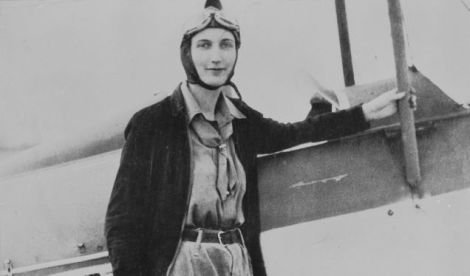
September 5, 1936 – Beryl Markham completes the first solo westward crossing of the Atlantic Ocean by a woman pilot. Born on October 26, 1902 in England, Markham was one of the first African bush pilots and flew as a game spotter for hunters on safari. Her transatlantic crossing began on September 4 and was planned from Dublin to New York City. However, poor weather forced her down in New Brunswick, Canada. Still, she completed the crossing, which is more difficult than going eastward since the pilot has to fly against the prevailing winds. Markham’s memoir West with the Night chronicles this flight, as well as other flying adventures she undertook. Markham died on August 3, 1986 at age 83.
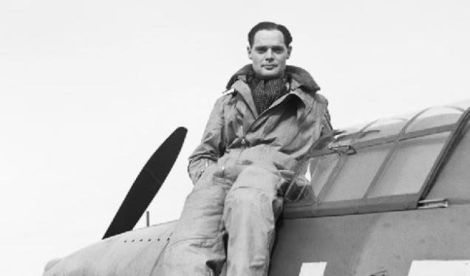
September 5, 1982 – The death of Douglas Bader, a WWII RAF fighter ace credited with 22 confirmed victories, four shared victories, and 11 damaged enemy aircraft. Bader had lost both legs, one above and one below the knee, in an aerobatic crash in 1931, but after his recovery he rejoined the RAF at the start of WWII. Bader scored victories in the skies over Dunkirk and later took part in the Battle of Britain. In August 1941 he bailed out of his stricken fighter over France and was captured. Bader was injured, and one of his prosthetic legs was damaged. Realizing that Bader was a storied fighter pilot, the Germans tried to repair the leg, but Bader eventually received a new one when a British bomber flew over the prison camp where he was held and dropped a new prosthesis by parachute. Despite his disability, Bader made so many escape attempts that his jailers threatened to confiscate his prosthetic legs. He was then held at Colditz Castle, where he remained imprisoned until the end of the war. Following the war, Bader continued flying until poor health forced him to quit in 1979. For his war service, Bader was awarded the Order of the British Empire, the Distinguished Service Order and Distinguished Flying Cross.

September 6, 1976 – Russian fighter pilot Viktor Belenko flies his MiG-25 Foxbat to Japan and defects to the West. Around 1970, Western spy satellites took their first images of a very large Soviet aircraft which analysts believed to be a new, highly maneuverable fighter. With spotty reports of an incredibly fast aircraft sighted near Israel, the US ramped up development of the McDonnell Douglas F-15 Eagle in response to the perceived threat. But the Soviet fighter remained shrouded in mystery until Lieutenant Viktor Belenko landed his factory-fresh MiG-25, complete with the flight manual, at Hakodate, Japan, and asked for asylum. The Japanese invited US technicians to inspect the fighter, NATO codename Foxbat, and the aircraft was completely disassembled. Fears over the aircraft were somewhat allayed when it was discovered that, while the Foxbat could approach speeds of Mach 3, it had a very short range, and was nowhere near as maneuverable as surmised, as it was intended as an interceptor rather than a fighter. The Foxbat was also very heavy, using mostly a nickel steel alloy rather than titanium. The MiG-25 was eventually returned to the Soviets in 30 crates, and the aircraft was later reassembled and placed on display at the Sokol plant in Nizhny Novgorod.
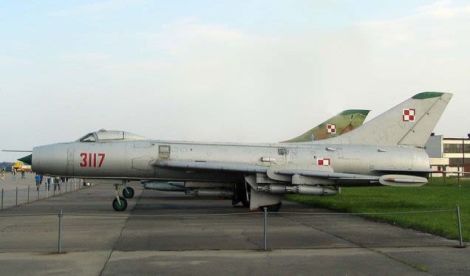
September 7, 1955 – The first flight of the Sukhoi Su-7, a swept-wing, supersonic, low-level tactical fighter given the NATO designation Fitter. The Su-7 was the first Soviet fighter to employ an all-moving tailplane (stabilator) and a movable cone in the air intake, known as a translating centerbody, that adjusted airflow into the engine at supersonic speed. Its wing was dramatically swept at 60-degrees and, when fitted with a Lyulka AL-7 afterburning turbofan, the Fitter was capable of reaching speeds up to Mach 2. Though unsuccessful as a dogfighter, the Su-7B variant proved very successful as a tactical ground attack aircraft and became the primary Soviet ground attack aircraft of the 1960s. Nearly 1,900 were produced from 1957-1972, and the type was retired in 1990.
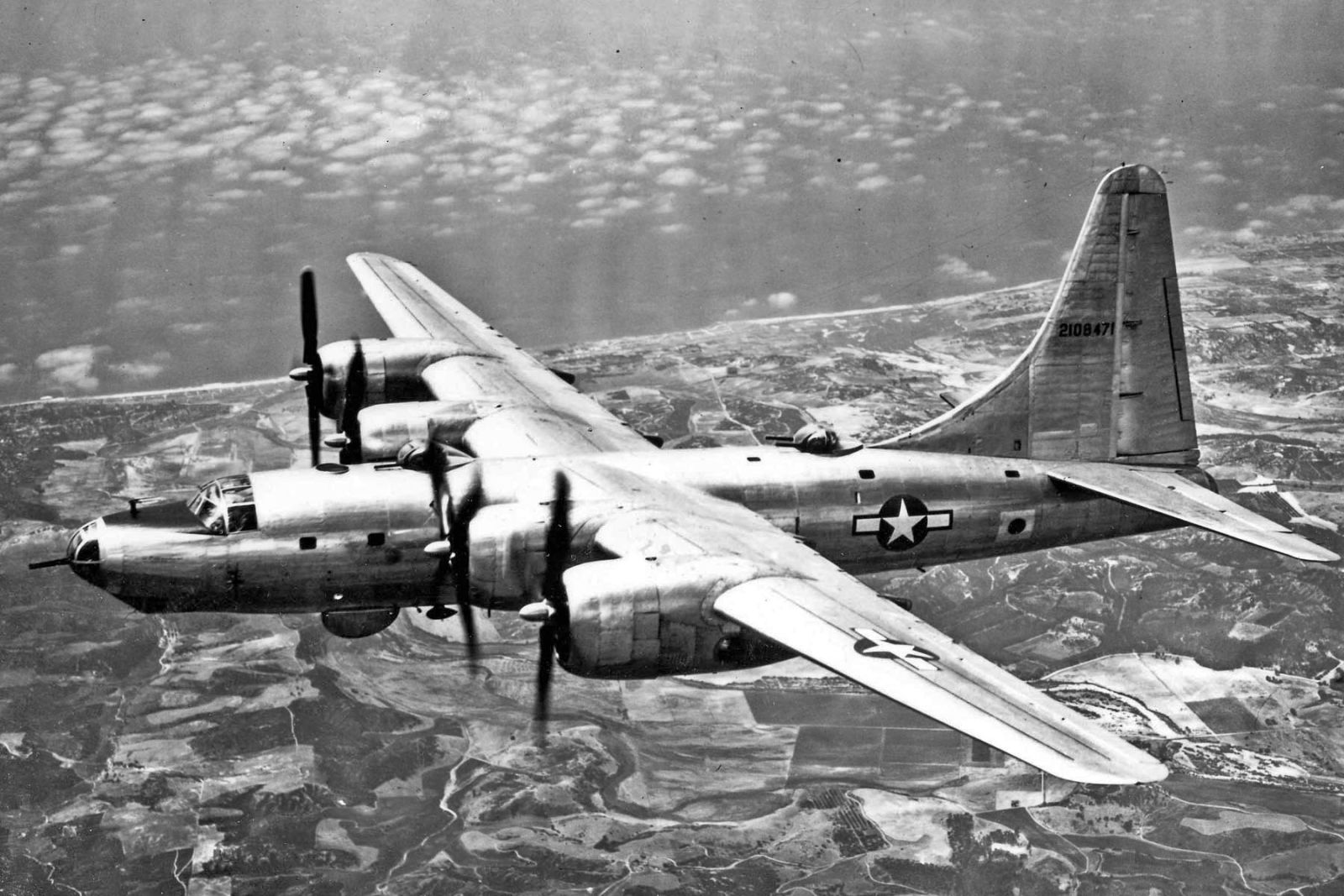
September 7, 1942 – The first flight of the Consolidated B-32 Dominator, a heavy strategic bomber developed as a fallback design should the Boeing B-29 Superfortress prove unsuccessful or suffer significantly delays. Following the successful launch of the Superfortress, production of the Dominator was halted after only 118 were built, and those saw only limited action in the war after arriving in the Pacific Theater in the summer of 1945. There, the bombers flew a handful of bombing missions and served mostly as armed reconnaissance aircraft. The B-32 holds the dubious distinction of carrying the last American airman to die in WWII. A Dominator on a reconnaissance mission over Tokyo was fired on by Japanese fighters four days after Japanese Emperor Hirohito announced Japan’s surrender, and photographer’s assistant Sergeant Anthony Marchione was killed.

September 7, 1940 – The first flight of the Blohm & Voss BV 222, a large, six-engine flying boat developed before WWII as a commercial transport and later pressed into military service to transport troops and supplies. Known as the Wiking (Viking), the BV 222 saw action in Europe and the Mediterranean. A total of 13 were built, and a number of them were destroyed by Allied fighters both in the air and on the ground, and a BV 222 was reported to have shot down a US Navy Consolidated PB4Y Liberator. Three BV 222s came into Allied hands, but were soon scrapped or destroyed. The last BV 222 is reportedly resting underwater near Norway, and plans are underway to raise and restore it.
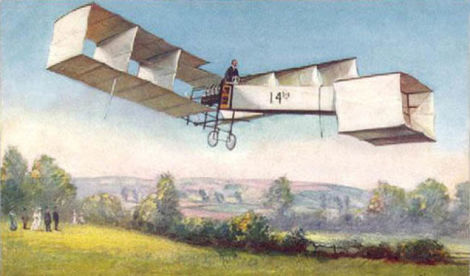
September 7, 1906 – The first flight of the Santos-Dumont 14-bis. Designed by Brazilian aviation pioneer Alberto Santos-Dumont, the 14-bis (for testing, the aircraft was attached to Santos-Dumont’s non-rigid airship Number 14, and bis means addition) was designed around the box kite principle, and had a forward box canard for control. The dihedral design of the wings provided lateral stability, and it was powered by an Antoinette 8V fuel-injected engine. Piloting the 14-bis, Santos-Dumont made the first powered flight anywhere outside of the US, as well as the first publicly witnessed powered flight, leading some to contend that the 14-bis is the first true airplane, since the Wright Brothers used a launch rail rather than taking off under the plane’s own power. For this reason, Brazilians hail Santos-Dumont as the “Father of Aviation.”
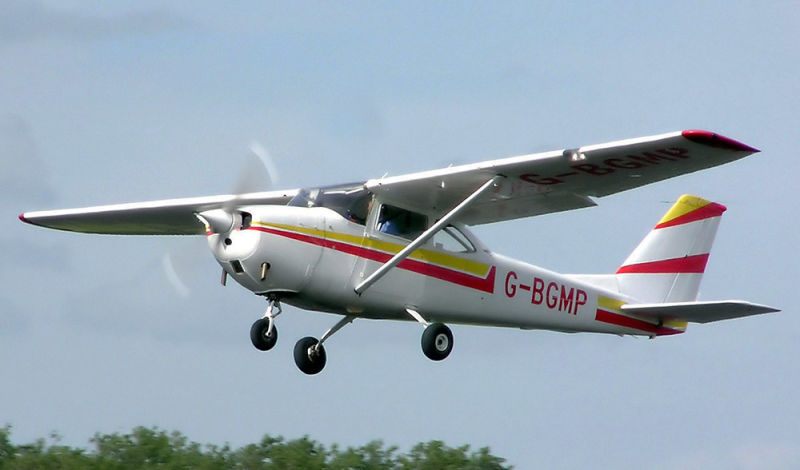
September 8, 1927 – The Cessna Aircraft Company is established. Clyde Cessna started out as a farmer in Rago, Kansas, and built his first airplane in 1911 after working for the Queen Aeroplane Company in New York. Along with Victor Roos, Cessna founded an aircraft manufacturing company in 1927 (Roos left after just one month), and the company’s first aircraft, the Cessna DC-6, was certified on October 29, 1929, the day the American stock market crashed. The company closed during the Great Depression, but was reopened by Cessna’s nephews in 1934. A brand of Textron Aviation since 2014, Cessna is based in Wichita, Kansas and is known for the production of both piston- and jet-powered general aviation aircraft. The company became famous with the introduction of the Cessna Model 172 in 1956, which has since become the most successful aircraft in history with over 43,000 produced.
Connecting Flights
If you enjoy these Aviation History posts, please let me know in the comments. You can find more posts about aviation history, aviators, and aviation oddities at Wingspan.
